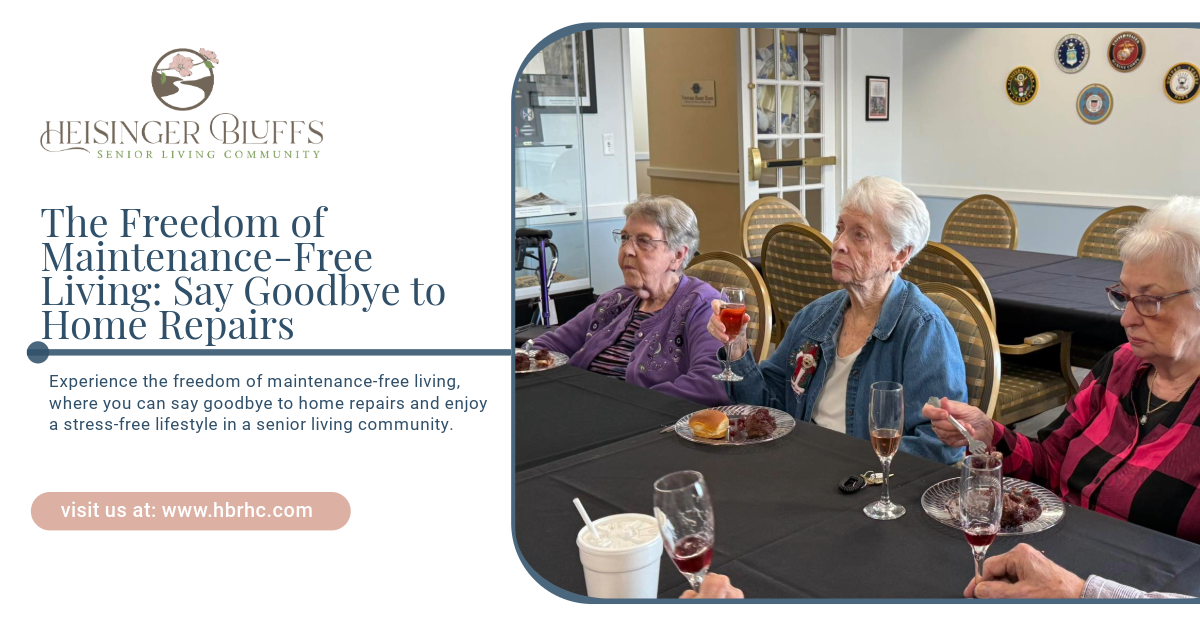Get in touch
Financial Planning for Senior Living: Understanding Costs and Payment Options in Jefferson City, MO

As we age, planning for senior living becomes an important part of securing a comfortable and supported future. Whether you or your loved one is considering assisted living, memory care, or long-term nursing care, understanding the financial aspects of senior living is crucial. Navigating the costs and exploring payment options can help families make informed decisions and find solutions that best fit their needs.
This guide will walk you through the different types of senior living costs, factors that influence pricing, and the various ways you can cover these expenses.
Types of Senior Living Facilities and Their Costs
There are several types of senior living options, each with different levels of care and associated costs. The choice depends on the individual's health, lifestyle, and care needs.
1. Independent Living
Independent living communities cater to seniors who are still active and capable of living on their own but prefer a more maintenance-free lifestyle. These facilities often provide amenities such as housekeeping, social activities, and dining options, but do not offer medical care or assistance with daily tasks.
Average Cost: Independent living communities in the U.S. typically cost between $1,500 and $4,000 per month, depending on location, amenities, and services offered.
2. Assisted Living
Assisted living facilities are designed for seniors who require some help with daily activities, such as bathing, dressing, and medication management, but do not need full-time nursing care. These communities often offer a balance between independence and support, providing a comfortable environment with healthcare oversight.
Average Cost: Assisted living costs generally range from $3,000 to $6,000 per month. The price can vary based on factors such as the level of care needed, location, and the amenities provided.
3. Memory Care
Memory care units specialize in providing care for seniors with Alzheimer's disease or other forms of dementia. These facilities offer a structured environment to reduce confusion, along with 24-hour supervision and specialized therapeutic activities to support cognitive health.
Average Cost: Memory care typically costs more than assisted living, with prices ranging from $4,000 to $7,000 per month, depending on the facility's services and the level of care required.
4. Skilled Nursing and Long-Term Care
For seniors who require around-the-clock medical care, skilled nursing facilities (nursing homes) offer comprehensive healthcare services. These facilities provide everything from rehabilitation to long-term care for chronic conditions, and they typically employ registered nurses and medical professionals.
Average Cost: Nursing home care costs vary widely but generally fall between $7,000 and $10,000 per month. This higher price reflects the intensive level of medical care and support provided.
Factors Affecting the Cost of Senior Living
Several factors contribute to the cost of senior living, and understanding these can help families better plan for the future:
- Location: The cost of living in urban areas or regions with higher demand for senior care tends to be higher. Facilities in large cities or popular retirement destinations often have higher price points compared to rural or suburban communities.
- Level of Care: The more assistance required for daily activities or medical care, the higher the cost. A resident with complex healthcare needs, for instance, will incur more costs than someone requiring only minimal support.
- Facility Amenities: Senior living communities offering premium amenities such as swimming pools, fitness centers, gourmet dining, and private apartments will have higher fees. The more luxurious the environment and services, the more families can expect to pay.
- Size of Living Space: Larger apartments or private suites in senior living facilities are typically more expensive than shared or smaller living spaces.
Payment Options for Senior Living
Paying for senior living is a significant financial consideration for families. Fortunately, there are various options to help cover the cost of care, including personal savings, insurance, government assistance, and other financial strategies.
1. Personal Savings and Assets
Many families use personal savings, pensions, or the sale of assets such as homes or property to fund senior living. This is often the first option for covering the initial costs, especially for those who have planned ahead and built a retirement fund.
2. Long-Term Care Insurance
Long-term care insurance is specifically designed to cover the costs of senior care, including assisted living, memory care, and nursing homes. Policies typically pay out a daily or monthly benefit, depending on the level of care needed. Purchasing long-term care insurance earlier in life can lower premiums and provide peace of mind for future care.
3. Medicaid
Medicaid is a state and federal program that provides healthcare coverage for low-income seniors, including assistance with long-term care. Eligibility varies by state, but Medicaid can help cover the costs of nursing home care or, in some cases, assisted living for those who qualify. It's important to understand Medicaid requirements and plan ahead, as not all senior living facilities accept Medicaid.
4. Veterans Benefits
Veterans and their spouses may qualify for benefits that help cover senior care costs. The Aid and Attendance (A&A) benefit, for example, offers financial support to veterans who need assistance with daily activities. Eligibility is based on service history, income, and level of care needed, making it a valuable resource for veterans entering senior living.
5. Reverse Mortgages
A reverse mortgage allows homeowners aged 62 and older to borrow against the equity in their home, receiving payments that can help cover the cost of senior living. This option is typically used when one spouse remains in the home while the other moves into a senior care facility. The loan does not need to be repaid until the homeowner sells the house, moves out, or passes away.
6. Bridge Loans
Bridge loans provide short-term financing for families who need immediate funds to pay for senior care while they are waiting for other financial resources to become available. These loans can be useful if a home is being sold or long-term care insurance is being processed.
7. Life Insurance Conversion
Some life insurance policies can be converted into long-term care benefits. This option involves selling the life insurance policy in exchange for funds that can be used to cover senior care expenses. Families should review their life insurance options to determine if this is a viable financial strategy.
8. Medicare
While Medicare does not cover long-term care in assisted living or nursing homes, it may cover short-term rehabilitation stays in skilled nursing facilities. This can be helpful if the senior needs temporary care after surgery, illness, or injury. However, it’s important to note that Medicare coverage for long-term stays is limited.
Financial Planning Tips for Senior Living
Planning for senior living requires careful consideration and an understanding of both current and future needs. Here are some tips to help families prepare:
- Start Early: Begin exploring senior living options and associated costs well before the need arises. This gives families more time to save and make informed decisions.
- Consult a Financial Planner: A financial advisor with experience in elder care planning can help families understand their options and create a strategy for covering senior living expenses.
- Evaluate Long-Term Care Insurance: Consider purchasing long-term care insurance early, as premiums increase with age. A policy can help mitigate the costs of senior care later in life.
- Consider Government Assistance: Research programs like Medicaid, Veterans Benefits, and other local or state initiatives that can help offset costs.
Conclusion
For those considering senior living in Jefferson City, understanding the financial landscape is essential for a smooth transition. Careful planning, exploring various payment options, and consulting with professionals can make the process manageable and ensure that you or your loved one receives the best possible care.
At Heisinger Bluffs, we provide a variety of living options designed to meet the needs of our residents, offering support, community, and a high quality of life.



Want to know more?
We will get back to you as soon as possible.
Please try again later.
You May Also Like To Read
Heisinger Bluff’s Life Plan Community is here to make your senior years safe, stimulating and enjoyable so that you can savor the present, knowing the future will be taken care of.
QUICK LINKS
CONTACT
©2024. Heisinger Bluffs. All rights reserved.








